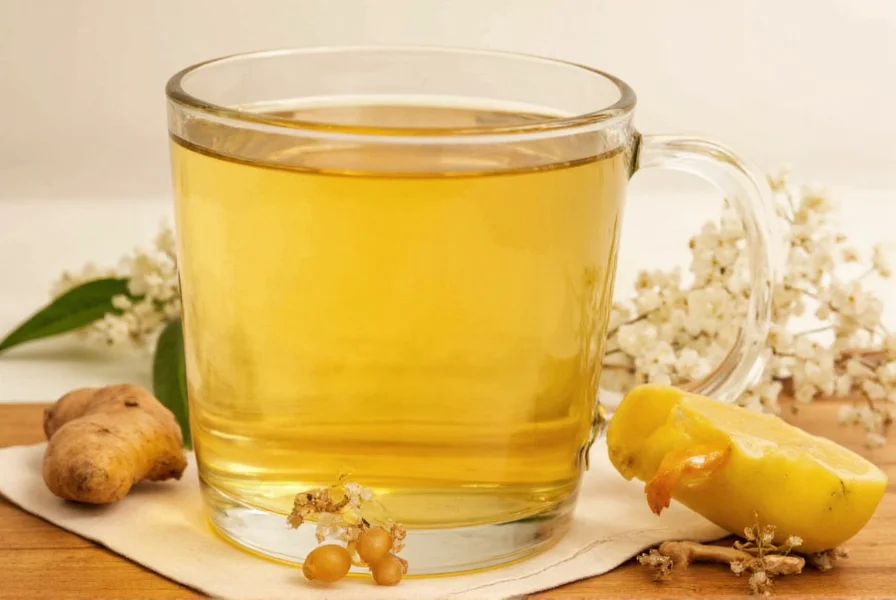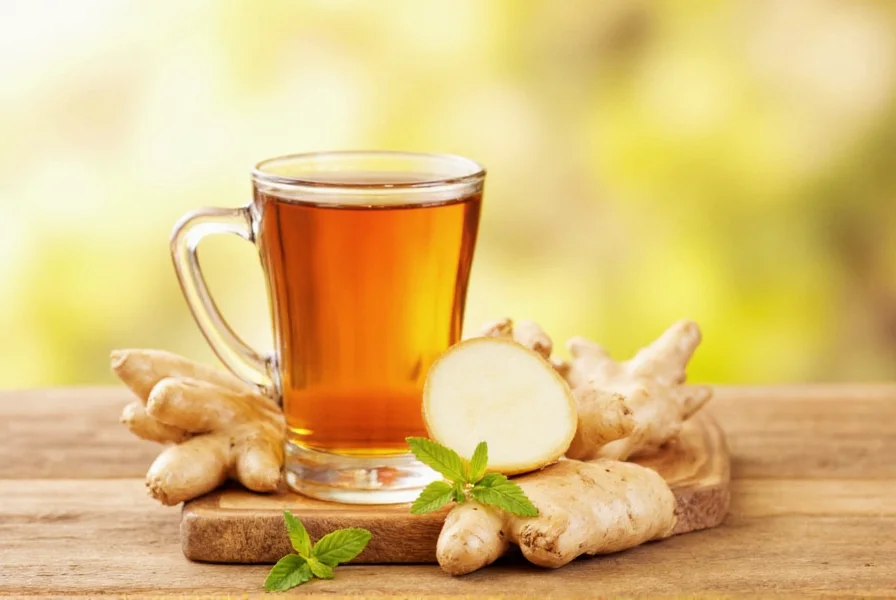For centuries, cultures worldwide have valued fresh ginger root tea for its distinctive flavor and potential wellness properties. This simple preparation harnesses the natural compounds in ginger, particularly gingerols, which research suggests may support various aspects of health. Unlike processed ginger products, fresh ginger root tea preserves the complete phytochemical profile of the root, potentially offering more comprehensive benefits.
The Science Behind Fresh Ginger Root Tea Benefits
Multiple studies indicate that ginger contains bioactive compounds with antioxidant and anti-inflammatory effects. A 2020 review published in Nutrients highlighted ginger's potential role in supporting digestive health, particularly for nausea relief. The same research noted ginger's potential cardiovascular benefits when consumed regularly as part of a balanced diet.
When you prepare fresh ginger root tea, you extract these beneficial compounds through the hot water infusion process. The concentration of active ingredients depends on factors like ginger quality, preparation method, and steeping time. This natural extraction process creates a beverage that may support wellness without artificial additives.
| Characteristic | Fresh Ginger Root | Dried Ginger Powder |
|---|---|---|
| Gingerol Content | Higher concentration of fresh gingerols | Some gingerols convert to shogaols during drying |
| Flavor Profile | Bright, zesty, with citrus notes | More intense, sharper heat |
| Preparation Time | 5-15 minutes steeping | Instant dissolution |
| Nutrient Preservation | Retains more volatile compounds | Some compounds degrade during processing |
How to Make Authentic Fresh Ginger Root Tea
Creating effective fresh ginger root tea requires attention to detail. Start with selecting high-quality ginger root—look for firm, smooth skin with minimal wrinkles. Avoid roots with soft spots or mold. The best ginger for tea has a spicy aroma when scratched.
For a standard preparation of fresh ginger root tea recipe:
- Peel 1-2 inches of fresh ginger root using a spoon (this preserves more flesh than a peeler)
- Slice or grate the ginger finely to maximize surface area
- Bring 2 cups of filtered water to just below boiling (195-200°F)
- Add ginger to water and simmer gently for 10-15 minutes
- Strain and optionally add lemon juice or raw honey
The optimal steeping time for maximum gingerol extraction is between 10-15 minutes. Longer steeping increases potency but may create excessive bitterness. For digestive support, consume 20-30 minutes before meals. For nausea relief, sip slowly when symptoms appear.

Variations to Enhance Your Fresh Ginger Root Tea Experience
While pure ginger tea offers significant benefits, strategic additions can enhance both flavor and potential health properties. Consider these evidence-based variations:
- Lemon-ginger tea: The vitamin C in lemon may improve absorption of ginger's compounds. Add fresh lemon juice after steeping to preserve nutrients.
- Ginger-turmeric tea: Combining these anti-inflammatory roots creates a synergistic effect. Add a pinch of black pepper to increase curcumin absorption.
- Ginger-mint tea: Mint complements ginger's heat while providing additional digestive support.
- Ginger-cinnamon tea: Cinnamon may help regulate blood sugar, complementing ginger's metabolic benefits.
Safety Considerations and Potential Side Effects
Fresh ginger root tea is generally safe for most adults when consumed in moderate amounts (up to 4 grams of ginger daily). However, certain populations should exercise caution:
- Individuals taking blood thinners should consult their physician, as ginger may increase bleeding risk
- Pregnant women should limit consumption to 1 gram daily, especially during the first trimester
- People with gallstones should consult a healthcare provider before regular consumption
- Those with heart conditions taking medication should discuss ginger consumption with their doctor
Excessive consumption (more than 5 grams daily) may cause heartburn, diarrhea, or mouth irritation in sensitive individuals. Always start with smaller amounts to assess tolerance when trying fresh ginger root tea for the first time.
Storage and Freshness Tips for Ginger Root
Proper storage maintains ginger's potency for tea preparation. Store unpeeled ginger root in the refrigerator's vegetable drawer, wrapped in a paper towel inside a resealable bag. This method preserves freshness for 2-3 weeks. For longer storage, freeze peeled ginger root in an airtight container for up to six months—frozen ginger grates easily without thawing.
Signs of spoiled ginger include darkening color, soft spots, mold, or a musty smell. Discard ginger showing these characteristics, as degraded ginger loses potency and may develop harmful compounds.

Comparing Fresh Ginger Root Tea to Commercial Alternatives
While convenient, many commercial ginger teas contain significantly less active compounds than homemade fresh ginger root tea. A 2021 analysis in the Journal of Food Science found that store-bought ginger tea bags typically contain only 15-30% of the gingerols found in equivalent amounts of freshly prepared tea.
When selecting commercial options, look for products listing "fresh ginger root" as the primary ingredient rather than ginger flavoring or extracts. Even then, freshly prepared tea generally provides superior flavor complexity and potentially greater health benefits due to the preservation of volatile compounds.
Conclusion: Maximizing Your Fresh Ginger Root Tea Experience
Fresh ginger root tea represents a simple yet powerful addition to a wellness-focused lifestyle. By understanding proper preparation techniques, potential benefits, and safety considerations, you can maximize the value of this ancient remedy. The key to optimal results lies in using quality ingredients, appropriate preparation methods, and mindful consumption based on individual needs and health status.
Frequently Asked Questions
How much fresh ginger should I use for one cup of tea?
For a standard 8-ounce cup of tea, use 1/2 to 1 inch of fresh ginger root, sliced or grated. This provides sufficient flavor and potential benefits without overwhelming heat. Adjust according to personal preference and tolerance.
Can I drink fresh ginger root tea every day?
Most adults can safely consume fresh ginger root tea daily in moderate amounts (up to 4 grams of ginger). However, continuous daily consumption for extended periods may lead to tolerance buildup. Consider cycling usage—3-4 weeks of daily consumption followed by a week break.
When is the best time to drink fresh ginger root tea?
For digestive support, consume 20-30 minutes before meals. For morning nausea, drink upon waking. For general wellness, spread consumption throughout the day. Avoid drinking large amounts close to bedtime as ginger may have mild stimulating effects for some individuals.
Does fresh ginger root tea help with weight loss?
While fresh ginger root tea alone won't cause significant weight loss, it may support metabolic health as part of a comprehensive approach. Some research suggests ginger may modestly increase thermogenesis and improve digestion, potentially complementing weight management efforts when combined with proper diet and exercise.
How long does fresh ginger root tea stay potent after brewing?
Freshly brewed ginger tea maintains optimal potency for 2-4 hours at room temperature. For maximum benefits, consume within this window. Refrigerated tea remains effective for up to 48 hours, though some volatile compounds degrade over time. Reheating may further reduce potency.











 浙公网安备
33010002000092号
浙公网安备
33010002000092号 浙B2-20120091-4
浙B2-20120091-4